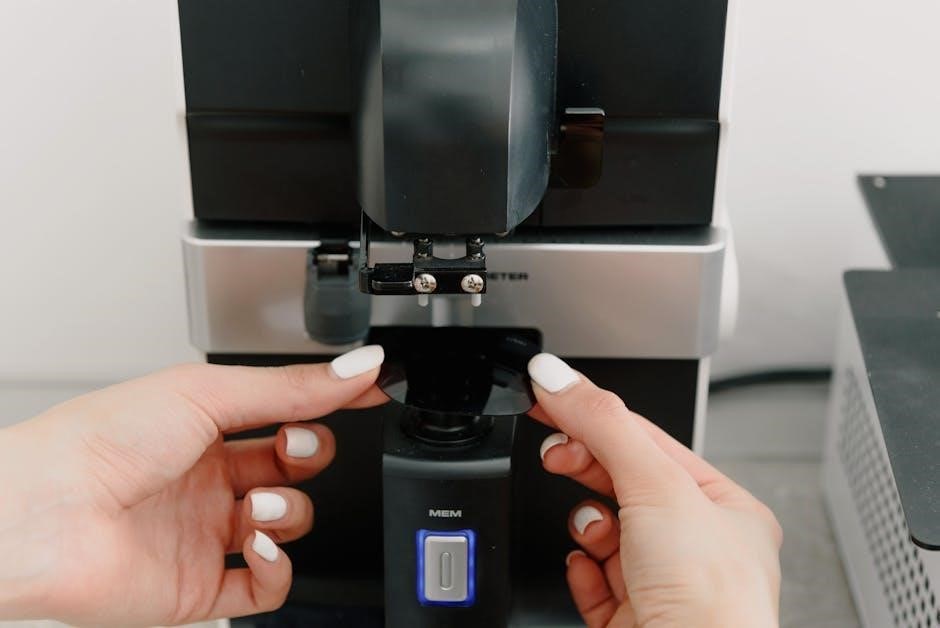g35 automatic to manual swap
Converting the Infiniti G35 from automatic to manual transmission enhances driving control and engagement. This guide provides a detailed overview of the swap process, benefits, and considerations for enthusiasts seeking improved performance and a more immersive driving experience.
Why Convert from Automatic to Manual Transmission?
Converting the G35 from automatic to manual transmission offers enhanced driving control, improved performance, and a more engaging experience. Manual transmissions provide better fuel efficiency, quicker acceleration, and a direct connection to the vehicle. For enthusiasts, the manual swap satisfies the desire for a more hands-on, immersive driving experience. It also allows for better control during spirited driving and reduces reliance on automatic systems. Additionally, the manual swap can be a cost-effective way to upgrade performance without major engine modifications. The satisfaction of mastering a manual transmission and overcoming the challenges of the swap adds to the appeal for many drivers.
Overview of the G35 Manual Swap Process
The G35 manual swap involves replacing the automatic transmission with a manual system, typically using components like the CD009 transmission, clutch kit, and manual-specific pedals. The process requires mechanical aptitude and detailed planning, as it includes removing the automatic transmission, installing the manual unit, and adapting the drivetrain. Key steps include swapping the pilot bearing, installing the clutch and flywheel, and modifying wiring for manual transmission compatibility. While challenging, the swap is feasible with the right tools and expertise. Proper preparation and research are essential to ensure a smooth transition and optimal performance.
Essential Components for the Swap
The G35 manual swap requires a CD009 transmission, clutch kit, flywheel, driveshaft, mounts, and manual-specific pedals. These components ensure compatibility and proper functionality.

Transmission and Compatibility
The CD009 transmission, sourced from the Nissan 350Z, is the most common choice for the G35 manual swap. It is compatible with both sedan and coupe models, ensuring a seamless integration with the VQ35DE engine. This transmission is highly regarded for its reliability and OEM-like performance. Compatibility extends to all RWD VQ-equipped vehicles, making it an ideal option for the G35 swap. Proper transmission selection is crucial to ensure a successful conversion and maintaining the vehicle’s performance characteristics.
Clutch Kit and Flywheel
A clutch kit and flywheel are essential components for the G35 manual swap. The clutch kit typically includes a pressure plate, clutch disc, and bearing, designed to work seamlessly with the manual transmission. The flywheel must be replaced with a manual-compatible unit, as the automatic pilot bearing needs to be removed. High-quality components ensure smooth engagement and durability. A clutch kit specifically designed for the VQ35DE engine is recommended for optimal performance. Proper installation of these parts is critical to avoid premature wear and ensure reliable operation. Tools like a pilot bearing puller may be required for the swap.
Driveshaft and Mounts
The driveshaft and mounts are critical components in the G35 manual swap. The driveshaft from a manual transmission-equipped G35 or 350Z is required, as it is shorter than the automatic version. Proper driveshaft length ensures correct alignment with the new manual transmission. Transmission mounts must also be replaced with manual-specific units to secure the CD009 gearbox correctly. Incorrect driveshaft length or incompatible mounts can lead to vibration, noise, or damage. Always verify compatibility and ensure proper installation for smooth operation. These components are essential for maintaining drivetrain integrity and performance in the converted vehicle.
Brake and Clutch Pedals
The clutch pedal assembly is a crucial component for the manual swap, typically sourced from a manual G35 or 350Z. It includes the clutch pedal, master cylinder, and interlock switch, which prevents starting without pressing the clutch. The brake pedal may require modification to accommodate the new clutch pedal. Ensure compatibility and proper alignment during installation. Used pedals often include the interlock switch, but verify before purchasing. Correct installation ensures smooth operation and prevents mechanical issues. This setup is essential for integrating the manual transmission system seamlessly with the vehicle’s controls.

Installation Process
The G35 manual swap involves replacing the automatic transmission, installing a manual setup, and integrating components like the clutch pedal and driveshaft. Detailed step-by-step guidance ensures a smooth conversion, addressing mechanical and electrical aspects for a seamless transition to manual control.
Pre-Installation Checks and Preparation
Before starting the G35 manual swap, ensure all necessary components are compatible and in good condition. Inspect the transmission, clutch, and driveshaft for any damage. Drain the automatic transmission fluid and disconnect the battery to avoid electrical issues. Remove interior components like the center console and shifter to access the transmission area. Verify that the clutch pedal and master cylinder are properly aligned and functional. Consult a detailed manual or seek professional advice if unfamiliar with the process. Proper preparation ensures a smoother installation and minimizes potential complications during the swap.
Step-by-Step Installation Guide
Begin by removing the automatic transmission and replacing it with the manual transmission, ensuring proper alignment and secure mounting. Install the clutch kit, flywheel, and pilot bearing, followed by the driveshaft. Replace the brake and clutch pedals with manual-compatible components, connecting the hydraulic lines for the clutch master and slave cylinders. Modify the wiring to integrate the manual transmission, ensuring the clutch interlock switch functions correctly. Reassemble the interior, reconnect the battery, and test the system to ensure smooth operation. Consult detailed guides or seek professional assistance if unfamiliar with complex steps to avoid errors.
Post-Installation Checks and Testing
After completing the manual swap, perform a thorough test drive to ensure smooth gear transitions and proper clutch engagement. Check for any leaks in the hydraulic system and verify that the reverse light and clutch interlock switch function correctly. Inspect the driveshaft and mounts for stability. Test the brakes to ensure they operate independently of the clutch. If any issues arise, such as difficulty shifting or unusual noises, consult a mechanic to address potential misalignments or component malfunctions. Proper testing ensures reliability and optimal performance of the manual transmission system.

Cost and Labor Considerations
The G35 manual swap requires a significant investment in parts, including transmission, clutch, and driveshaft. Labor costs vary, with DIY options saving money but demanding time and expertise.
Estimated Cost of Parts and Tools
The estimated cost for a G35 automatic to manual swap varies widely, but essential components include a manual transmission (around $1,500 to $3,000), a clutch kit ($500 to $1,000), and a flywheel ($300 to $600). A driveshaft may need modification or replacement, costing between $200 to $500. Brake and clutch pedals, if not already compatible, can add another $300 to $600. Tools and miscellaneous parts, such as a transmission jack and specialized sockets, can range from $200 to $500. Additionally, labor costs for professional installation can add $2,000 to $4,000, depending on the mechanic’s rates. Overall, a DIY swap might cost between $3,000 to $6,000, while a professional installation could range from $5,000 to $10,000 or more, depending on the complexity and the shop’s labor charges.
Labor and Time Requirements
The G35 automatic to manual swap requires significant time and labor, typically taking 40 to 100 hours depending on experience. A skilled mechanic or experienced DIYer may complete it in 40-60 hours, while novices could take longer. Key time-consuming steps include removing the automatic transmission, installing the manual transmission, and adjusting the clutch system. Additional time is needed for wiring modifications and troubleshooting. Professional labor costs can range from $2,000 to $4,000, depending on the shop’s rates. Proper planning and tools are essential to ensure efficiency and avoid delays during the process.

Troubleshooting and Wiring Modifications
Common issues include wiring the clutch start switch and resolving transmission codes. Bridging Terminal 53 (Grey/Red Stripe Wire) with a 12V source enables starting without the clutch. Essential for a seamless swap.
Common Issues and Solutions
During the G35 automatic to manual swap, common issues arise such as improper clutch alignment, faulty pilot bearing removal, and wiring malfunctions. For instance, the automatic pilot bearing must be replaced with a manual one, a process that can be labor-intensive. Additionally, clutch pedal installation may require adjusting the interlock switch to ensure proper starting functionality. Wiring challenges often involve correctly bridging the 12V source to Terminal 53 (Grey/Red Stripe Wire) to bypass the clutch start requirement. Addressing these issues ensures a smooth and successful conversion, enhancing the overall driving experience.
Wiring Modifications for Manual Transmission
Wiring modifications are crucial for a seamless G35 automatic to manual swap. Key steps include bridging the 12V source directly to Terminal 53 (Grey/Red Stripe Wire) on the IPDM to enable starting without the clutch. This bypasses the automatic transmission’s dependencies, allowing the manual setup to function properly. Additionally, ensuring the clutch interlock switch is correctly integrated prevents starter engagement issues. Proper wiring ensures all components work harmoniously, avoiding electrical faults and ensuring reliability. These modifications are essential for a successful swap, providing a clean and functional manual transmission system.
Community Support and Resources
Online forums, DIY guides, and professional services offer extensive support for G35 manual swaps. Enthusiasts share experiences, while swap kits and expert services ensure a smooth conversion process.
Online Forums and DIY Guides
Online forums like Nissan350Z Zociety and Reddit communities provide invaluable insights and support for G35 manual swaps. Enthusiasts share detailed DIY guides, step-by-step tutorials, and troubleshooting tips. YouTube channels and specialized automotive forums offer video tutorials and real-world experiences. These resources cover everything from parts compatibility to wiring modifications, ensuring a well-prepared approach. Many forums also host discussions on common challenges, such as pilot bearing removal and clutch pedal installation. With access to these platforms, DIYers can gain confidence and avoid costly mistakes, making the swap process more accessible and manageable for enthusiasts of all skill levels.
Professional Services and Swap Kits
Professional services and pre-assembled swap kits simplify the G35 manual conversion process. Companies offer comprehensive kits, including transmissions, mounts, and clutch components, ensuring compatibility and ease of installation. Services like bridging 12V to Terminal 53 eliminate the need for clutch interlock switches. Swap kits often include the CD009 transmission, ideal for 350Z and G35 models. Professional installers provide warranties and expertise, reducing DIY risks. These services cater to enthusiasts seeking a seamless, OEM-like conversion, ensuring a polished and reliable result. They also handle complex tasks like wiring modifications, making the swap more accessible for those with limited mechanical experience.
